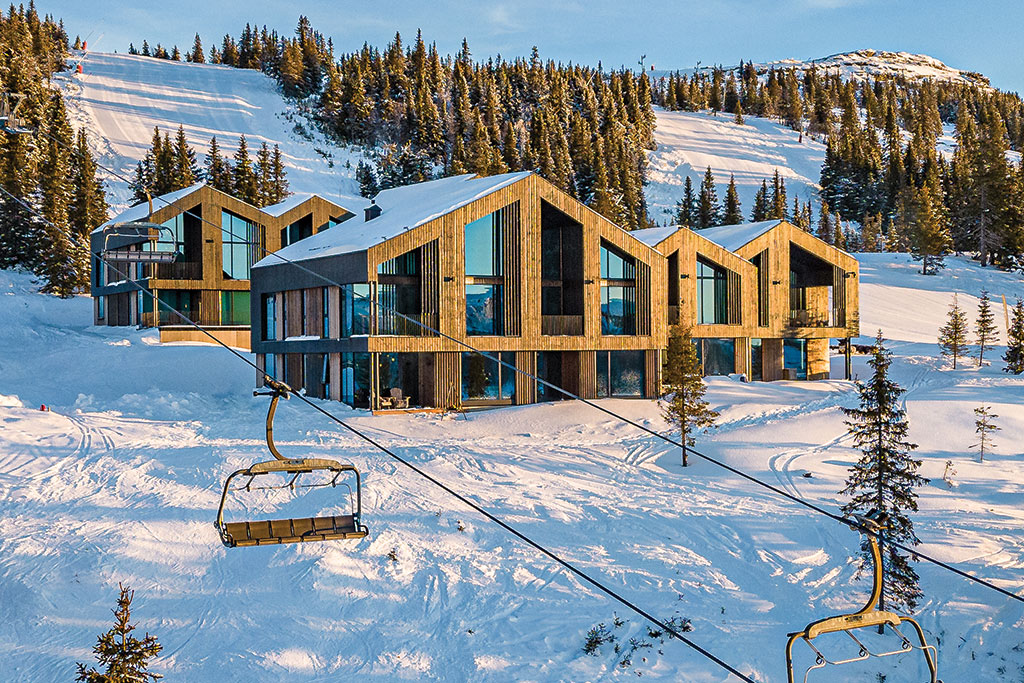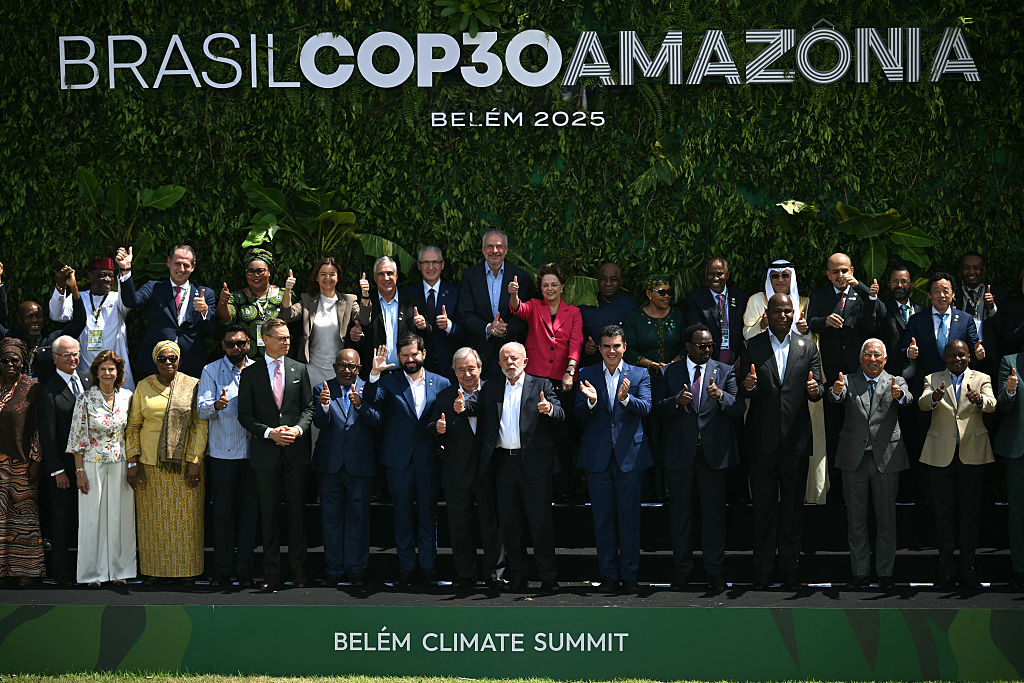Jim O’Neill on nearly 25 years of the BRICS
Jim O’Neill, who coined the acronym BRICS in 2001, tells MoneyWeek how the group is progressing


Matthew Partridge: It has now been nearly 25 years since you coined the term BRICS for Brazil, Russia, India and China, and the four nations have embarked on very different trajectories. Which one do you think has been the most successful, and why?
Jim O’Neill: Without a doubt, China. Despite the problems they’ve had since 2015, China has just blown the other three countries away. I remember that in the original research note we had this graph using racing cars to illustrate when each of the BRICS might overtake their G7 counterparts. And we originally had China overtaking Japan by 2030. In fact, it did so by 2010, and today China is four times bigger than Japan and twice the size of the other BRICS put together.
Matthew Partridge: How has it managed that?
MoneyWeek
Subscribe to MoneyWeek today and get your first six magazine issues absolutely FREE

Sign up to Money Morning
Don't miss the latest investment and personal finances news, market analysis, plus money-saving tips with our free twice-daily newsletter
Don't miss the latest investment and personal finances news, market analysis, plus money-saving tips with our free twice-daily newsletter
Jim O’Neill: The Chinese leadership has taken advantage of the stability provided by their political system to take a very long-term view of what they want to do. This is shown by their massive investment in the rail network and the move towards electric cars, while even their five-year plans contain many longer-term goals. For instance, in 2020 they set themselves a target of doubling per capita GDP by 2035. They are clearly going to achieve this.
Matthew Partridge: Surely the example of Russia shows that having a stable political system doesn’t always lead to wise decision-making?
Jim O’Neill: Like Brazil, Russia suffers from the so-called “commodities curse”. In 2001 I warned that both countries were so well endowed with natural resources that they would have to find a way to avoid following the example of other commodity-rich countries who became lazy and didn’t diversify their economies or think about innovation.
And we’ve seen this with all the corruption and state capture of the post-Soviet era, as well as the astonishing misallocation of resources devoted to fighting the brutal war in Ukraine. Our attempts to include Russia in the international community, even expanding the G7 to become the G8, proved spectacularly naive.
Matthew Partridge: Do you see the latest deal between the US and China as a genuine turning point in the trade war, or just a temporary pause?
Jim O’Neill: I lean towards the latter, although I hope I’m wrong. China’s huge population means that if it succeeds in doubling GDP per capita by 2035, it is going to become as big as the US in dollar terms, and much bigger at some point. The US won’t like this as it is obsessed about being the biggest – witness its anger in the 1980s when it looked like Japan would become a serious rival.
However, I have detected an increasing recognition over the past few years that the US can’t pressure China in the way that it has every other country in the past. Still, I’m sceptical that this will translate into a permanent improvement in relations – a pity, as 80% of the global GDP growth we’ve had since 2000 has come from the US and China.
Matthew Partridge: Could China fall into the middle-income trap, where growth slows to a crawl before it reaches the level of a fully developed country?
Jim O’Neill: China certainly has its problems and needs to continue its reforms. The property sector is troubling, while its demographics have passed their peak. It also needs to give people who have migrated from rural to urban areas full rights, as a two-tier social system still exists in the cities. One reason the domestic savings rate is so high is that those people have no land or property, and can’t buy either.
However, if anything, Chinese productivity might be accelerating. I recently read that while exports to the US are down something like 10% year on year due to tariffs, exports to the global South are rising sharply. China is now responsible for 20% of global manufacturing. Most importantly, it is moving up the value chain and is no longer just relying on producing low-quality goods based on cheap labour.
Matthew Partridge: What about India?
Jim O’Neill: India is such a fascinating, complex place. It is in a sweet spot demographically and it is urbanising dramatically. When I was there last year I was pleasantly surprised by the considerable improvements in urban transport and infrastructure, with airports and roads vastly improved. Digitisation has also helped people on low incomes and those in rural areas secure access to both public services and financial products. You could even say that India is where China was 25 years ago.
Still, India should be capable of growing by 10% a year, as China did at the same stage. There are some very obvious major reforms that the Indian leadership should implement. For example, the amount of waste and inefficiency in agriculture is enormous, and there are still 300 million people who can’t really read or write. China is also very protective of many of its industries, with all sorts of barriers to foreign competition and foreign investors.
Matthew Partridge: Switching topics, are you sceptical about the AI revolution?
Jim O’Neill: Given the colossal amount of wealth being created for the owners of AI, we need to make sure productivity starts to improve – and for this process to benefit the entire economy. Otherwise, you will start to see a backlash against capitalism, as shown by the victory of the populist Zohran Mamdani in New York. One exciting way in which AI could definitely benefit the public is in healthcare, especially in combating the assumption that healthcare costs are going to just keep rising forever.
Matthew Partridge: Is there a risk that the government spends huge amounts on building infrastructure for these data centres only for the expected demand to fail to materialise?
Jim O’Neill: Yes. It bothers me that, up until now, there have been few incentives to develop many of the world-leading technologies that we have, especially in the North of England, such as small modular reactors. Then Donald Trump comes over with some of his big technology pals, saying they’ll do this, that and the other, and then suddenly you’re reading about potentially 10 versions of SMRs possibly being built in Teesside. So instead of trying to do that to help cut our own energy costs, we’re doing it in order to support them.
Matthew Partridge: How did you become chair of the venture fund Northern Gritstone, and what do you hope it can achieve?
Jim O’Neill: After I finished my career as a global banker and economist, I chaired the Cities Growth Commission, which came up with the idea for the Northern Powerhouse. Later on, I served briefly as a government minister under David Cameron to help push it through.
However, during my time there I realised that there were quite a few universities in the world’s top 100, and we were taking all these brilliant students with superb research from all over the place, only for them to disappear after they had finished their studies.
Given that many of these innovations involved areas of low productivity, I recommended that policymakers should do something to encourage more spin-outs that could add economic value in these regions. And so, when the idea of Gritstone came up from the three founding universities – Sheffield, Leeds and Manchester – I was asked to be chair because of my time working on the Northern Powerhouse. And I didn’t hesitate to say yes because I thought it was very exciting. If Gritstone works, it could help boost the productivity of the North. I have found it very stimulating.
Matthew Partridge: What do you think could be done to encourage more entrepreneurship in the UK?
Jim O’Neill: Sadly, there is no magic bullet when it comes to encouraging risk-taking and entrepreneurship. Even the decision of British institutional investors to allocate more of their funds to gilts rather than domestic shares has been sensible given our low productivity growth and the poor performance of the FTSE. So, as with AI, there is no point getting them to put more of their money into UK shares unless that helps the wider economy.
That said, I would like to see institutions such as the British Business Bank given a bit more freedom to think of itself along the lines of Singapore’s Temasek (a mixture between a sovereign wealth fund and an independent global investor). It should see itself as encouraging growth investment by being a key investor as opposed to being a bank. I would also like to see more support for institutions such as Gritstone, while local authorities’ pension funds could also provide more genuine risk capital.
Finally, I have been worried by much of the pre-Budget pressure on the chancellor from certain think tanks to raise capital-gains tax to the same level as income tax. While certain forms of business taxation, especially around sole traders, could be treated more closely to income tax, when it comes to venture capital investing, it is extremely risky; you can lose a lot of money. So it’s very important that tax incentives for genuine risk-taking and rewards are retained.
Jim O’Neill is a former chairman of Goldman Sachs Asset Management and commercial secretary to the Treasury. He is currently chair of Northern Gritstone, a venture capital fund.
This article was first published in MoneyWeek's magazine. Enjoy exclusive early access to news, opinion and analysis from our team of financial experts with a MoneyWeek subscription.
Get the latest financial news, insights and expert analysis from our award-winning MoneyWeek team, to help you understand what really matters when it comes to your finances.

-
 The war dividend – how to invest in defence stocks as the world arms up
The war dividend – how to invest in defence stocks as the world arms upWestern governments are back on a war footing. Investors should be prepared, too, says Jamie Ward
-
 Literacy Capital: A trust where great returns fund a good cause
Literacy Capital: A trust where great returns fund a good causeThere’s plenty to like about specialist private-equity trust Literacy Capital, says Max King
-
 An AI bust could hit private credit – could it cause a financial crisis?
An AI bust could hit private credit – could it cause a financial crisis?Opinion Private credit is playing a key role in funding data centres. It may be the first to take the hit if the AI boom ends, says Cris Sholto Heaton
-
 8 of the best ski chalets for sale now
8 of the best ski chalets for sale nowThe best ski chalets on the market – from a traditional Alpine-style chalet in Switzerland to an award-winning Modernist building in Japan’s exclusive ski areas
-
 Did COP30 achieve anything to tackle climate change?
Did COP30 achieve anything to tackle climate change?The COP30 summit was a failure. But the world is going green regardless, says Simon Wilson
-
 Who is Christopher Harborne, crypto billionaire and Reform UK’s new mega-donor?
Who is Christopher Harborne, crypto billionaire and Reform UK’s new mega-donor?Christopher Harborne came into the spotlight when it emerged he had given £9 million to Nigel Farage's Reform UK. How did he make his millions?
-
 Rachel Reeves's punishing rise in business rates will crush the British economy
Rachel Reeves's punishing rise in business rates will crush the British economyOpinion By piling more and more stealth taxes onto businesses, the government is repeating exactly the same mistake of its first Budget, says Matthew Lynn
-
 The best Christmas gifts for your loved ones
The best Christmas gifts for your loved onesWe round up the best Christmas gifts with a touch of luxury to delight, surprise and amaze family and friends this festive season